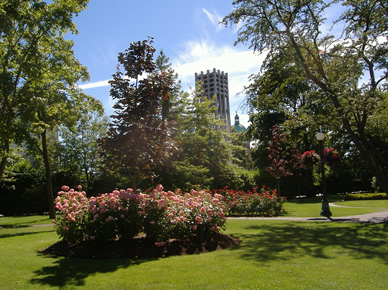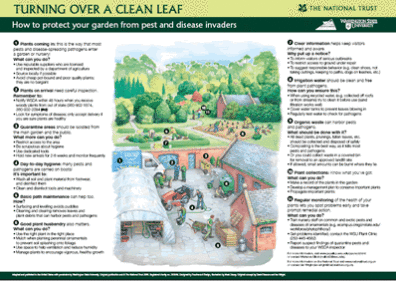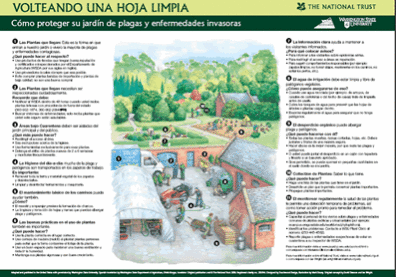Botanical Gardens
 Because they are open to the public, botanical gardens are at risk of damage from SOD and other diseases and pests. Find out how you can prevent introduction of these organisms and what to do if they get in:
Because they are open to the public, botanical gardens are at risk of damage from SOD and other diseases and pests. Find out how you can prevent introduction of these organisms and what to do if they get in:
Guidelines for bio-security
These documents from the UK National Trust have information that will also apply to public gardens in the US and Canada:
Guidance for visitors on how to help us protect the garden from introduced pests and diseases
NT Plant Quarantine and Bio-security Guidance Notes
2a. Handling brought-in plants and quarantine areas – general advice
3. Use of Phytophthora lateral flow devices (LFD)
4. Cleaning footwear and hands
5. Managing gardens to reduce the risk of pests and diseases
Now available:
This poster illustrates best management practices for preventing disease and pest problems in gardens and nurseries. It can be posted in a break room or other common area to educate workers, volunteers, and others. Available in English and Spanish versions.
Download the pdf for printing: English or Spanish
Or contact Marianne Elliott to obtain the print version (24″ x 16.5″)
Many thanks to Ian Wright, The National Trust, for providing the information on this webpage.
National Trust is a UK charity formed over 100 years ago to protect places of Historic Interest or Natural Beauty, for ever for everyone.
It now manages 1 million acres of countryside, 600 miles of Coastline, 240 Buildings of Historic importance and 220 historic gardens and parks (covering 35,600 acres in England, Wales and Northern Ireland. The National Trust is financially supported by membership subscriptions, donations and visitor income.
Over 3.5 million people are members of the National Trust. 12 million people visit our gardens each year. Over 700 plants have been raised, bred or named at our gardens. Our gardens span over 700 years of garden history and plant collecting.

